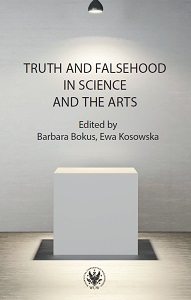Illusion and Truth in Theater from the Baroque to Romanticism
Illusion and Truth in Theater from the Baroque to Romanticism
Author(s): Izabella Zatorska
Subject(s): Philosophy, Psychology, Theoretical Linguistics, Applied Linguistics
Published by: Wydawnictwa Uniwersytetu Warszawskiego
Keywords: truth; illusion; theater within the theater; mise en abyme; mimesis
Summary/Abstract: What does theater, as a metonymy for literature and art, represent in the centuries of transition? French classical theater was aware of difficulties in using the Aristotelian rule of mimesis. The problem of the impossibility of capturing the essence of things, when post-truths were not yet known, was acknowledged, in theory and in practice, by Baroque theater: From the perspective of theatrum mundi, with the use of “theater within the theater” (Shakespeare, Pierre Corneille, Molière), it showed the hidden, disturbing depth of “the norm of the day.” The problem of appearances (Lesage, Marivaux) resulted in the aesthetic and moral reform of Diderot, theoretician and practitioner of drama. Radical in their revolt, the protagonists of Schiller and Musset rejected both any compromise with illusion and the possibility of reforms. At the same time, they longed for the incarnation of the ideal of pure love, and were prepared to destroy others and even themselves if this ideal was to turn out to be a lie. Goodness and responsibility, as the basis for a play, are the values which – according to Father Józef Tischner – promise that Abel’s choice will prevail over Cain’s.
Book: Truth and Falsehood in Science and the Arts
- Page Range: 69-89
- Page Count: 21
- Publication Year: 2020
- Language: English
- Content File-PDF

